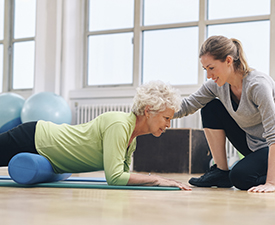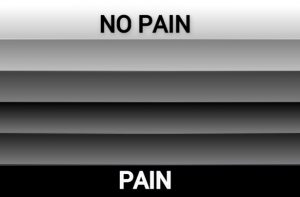via Gfycat
The terms flexibility and mobility are often used interchangeably. Although from the same “family” they are two different things. The fundamental difference is that flexibility relates to the ability of a muscle to lengthen. Mobility refers to the ability of the muscles to lengthen with control.
For example, if you can lay on your back on table and someone can push your straight leg back toward you with your knee straight so that your hip is flexed past 90 degrees, that would be your hamstring flexibility.
Then if you stood up from the table and tried to kick your leg to the same range, it is doubtful you get more than 60-80% of the range you had on the table.
That’s the difference between mobility and flexibility in its most simplified way.
Is one better than the other?
Both are important and we use both with our clientele at various times in their journey and for different objectives. But ultimately, mobility is more transferable to activities of life, work and sport. This is because mobility is a much more integrated “hardware” and “software” process. Hardware referring to the soft tissue and software referring to the nervous system.
Conversely, someone pushing on your leg (or you pulling with a strap or belt) is more of a hardware process and less of a software process then the more movement-based mobility approach.
At the end of the day, flexibility is a means to an end and not the end itself. The results of stretching can feel good and help with the compliance of our tissue.
Improvements in our range of motion (ROM) from flexibility practices can be acute (immediate but short term) and chronic (sustained improvements).
Some of the most up to date research on flexibility has shown that the most effective strategy for acute changes in ROM is self-myofascial release followed by either static or dynamic stretching. This would include foam rolling, lacrosse or tennis balls, massage sticks and other implements.
The following guide can help compare and contrast the techniques you use to feel like you have more range of motion and feel “looser”.
Self-Myofascial Release
What it is: The use of foam rollers, lacrosse or tennis balls, massage sticks and other implements in soft tissue areas of the body to produce a form of self-massage.
What it does:
Effects both the mechanical properties of the soft tissue (skin, fascia, muscles, tendons, nerves, blood vessels) and the nervous system. It reduces the resting tone of the effected muscles, leading to healthier, more compliant soft tissue.
What it doesn’t do:
Lengthen muscles or fascia

Senior woman using a foam roller for self myofascial release
What it does:
Increases range of motion at a joint by lengthening the elastic component of the muscle, causing some changes in the visco-elastic properties of the muscles. Some improvements in stretching are actually attributed to the individual’s increased tolerance to the discomfort of stretching.
What it doesn’t do:
1. No clear evidence that is reduces the risk of injury prior to activity
2. May decrease force production when done prior to explosive and/or maximal effort (such as jumping, maximal lifting, etc.).
Dynamic/Active Stretching
What it does:
Increases heat and fluid exchange to the tissue. This helps with elasticity to the soft tissue. Stimulates the nervous system and thereby prepares the body for activity.
What it doesn’t do:
Provide huge gains in range of motion
Some of the most up to date research on flexibility has shown that the most effective strategy for acute changes in ROM is self-myofascial release followed by either static or dynamic stretching. The research include using foam rollers, lacrosse or tennis balls, massage sticks and other implements.

